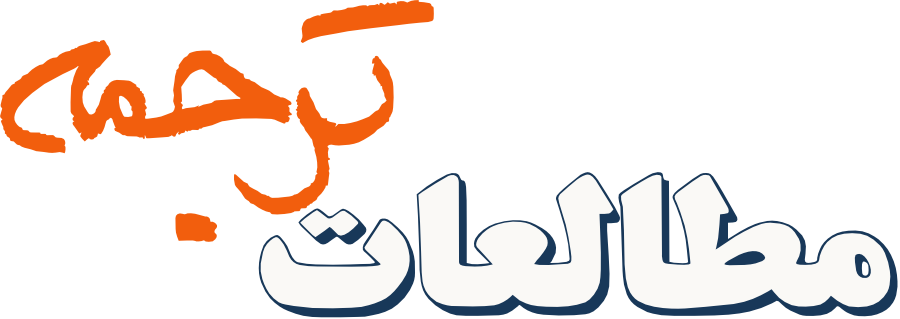گرایش¬های هویتی دانشجویان مترجمی و نگرش آنها به سانسور
چکیده
این پژوهش گرایشهای هویتی دانشجویان مترجمی را از دیدگاه جامعه شناختی و روان شناختی بررسی میکند؛ به عبارت دیگر، چگونگی تأثیر جنبههای مختلفِ هویتِ شخصی، اجتماعی، رابطهای و جمعی شرکتکنندگان بر نگرش آنها به سانسور در ترجمه بررسی شده است. برای یافتن پاسخ به سؤالات این پژوهش، از روش کمیِ توصیفی-تحلیلی استفاده شد و به گروهی از دانشجویان مترجمی که حداقل یک سال سابقة ترجمه از انگلیسی به فارسی داشتند، پرسشنامهای داده شد. سپس، دادههای نمونهای متشکل از 143 شرکت کننده جمع آوری شد و مورد تجزیه و تحلیل قرار گرفت. یافته های پژوهش حاکی از آن است که تمامی گرایشهای هویتی دانشجویان مترجمی—به جز هویت جمعی—رابطه مستقیمی با مخالفت با سانسور در ترجمه دارند. همچنین، با تجزیه و تحلیل دادهها، می توان این گونه نتیجه گرفت که در حالی که دانشجویان مترجمی با هویت شخصی قوی تر، مقاومت بیشتری در برابر سانسور نشان میدهند، مترجمانی که هویت جمعی قوی تری دارند بیشتر پذیرای سانسور در ترجمه هستند.
کلمات راهنما:
دانشجویان مترجمی، رویکرد جامعه¬شناختی، رویکرد روان¬شناختی، سانسور، نگرش، هویتمراجع
Baker, M. and Saldanha, G. (2009). Routledge encyclopedia of translation studies. New York: Routledge.
Bakhshande, F. (2017). Translation and Censorship in Contemporary Iran, (Unpublished M.A. Thesis), Tehran University.
Billiani, F. (2009). Censorship. In M. Baker, & G. Saldanha (Eds.), Routledge Encyclopedia of Translation Studies (2nd ed., 28–31), Abingdon and New York: Routledge.
Billiani, F. (Ed.) (2014). Modes of censorship: National contexts and diverse media. London and New York: Routledge.
Bourdieu, P. (1991). Language and Symbolic Power. Ed. John B. Thompson. Trans. Gino Raymond and Matthew Adamson. Oxford.
Burke, P. (2020). Identity. In P. Kivisto (Ed.), The Cambridge Handbook of Social Theory (pp. 63–78). Cambridge: Cambridge University Press. DOI: 10.1017/9781316677452.005
Cheek, J. M. & Briggs, S. R. (2013). Aspects of Identity Questionnaire (AIQ-IV). Measurement Instrument Database for the Social Science. Measurement Instrument Database for the Social Science, http://www.midss.org/content/aspects-identity-questionnaireaiq-iv
Cheek, J. M. & Cheek, N. N (2018), Aspects of identity: From the inner-outer metaphor to a tetrapartite model of the self. Self and Identity, (17)4, 467–482.
Etilé, F., & Rémi, Y. I. N. (2020). Measuring Identity Orientations for Understanding Economic Preferences: A French Validation of the Aspects-of-Identity Questionnaire.
Farahzad, F. & Varmazyari, H. (2018). Translators’ Identities within Approaches to Translation Sociology: A Comparative Study of Trainee Translators, inTRAlinea Vol. 20. https://www.intralinea.org/archive/article/2289
Geng, Q. (2023). Narrative inquiry of translators’ identities: A study of meaning-making in narrating knowledge. Frontiers in Psychology, 14, 107–178. DOI: 10.3389/fpsyg.2023.1070178
Gentzler, E. (2008). Translation and Identity in the Americas: New Directions in Translation Theory. London & New York: Routledge.
Hagger, M. S., Anderson, M., Kyriakaki, M., & Darkings, S. (2007). Aspects of identity and their influence on intentional behavior: Comparing effects for three health behaviors. Personality and Individual Differences, 42(2), 355–367. https://doi.org/10.1016/j.paid.2006.07.017
Leonardi, V. (2008). Power and control in translation: Between ideology and censorship. Language, Communication and Social Environment, Voronezh: VGU 80–89.
Mollanazar, H., & Ghaderi, R. (2018). Resistance in Translations Published as White-Cover Books. Iranian Journal of Translation Studies, 16(62), 41–62. Retrieved from https://journal.translationstudies.ir/ts/article/view/614
Oyserman, D., Elmore, K., & Smith, G. (2012). Self, self-concept, and identity. Handbook of self and identity, 2, 69–104.
Ryder, A. G., Alden, L. E., & Paulhus, D. E. (2000). Is acculturation unidimensional or bidimensional? A head-to-head comparison in the prediction of personality, self-identity, and adjustment. Journal of Personality and Social Psychology, 79, 49–65.
Saldanha, G. & O’Brien, S. (2014). Research Methodologies in Translation Studies. Abingdon: Routledge.
Sela-Sheffy, R. (2014). Translators’ identity work: Introducing microsociological theory of identity to the discussion of translators’ habitus, Vorderobermeier, Gisella M., ed [Approaches to Translation Studies, 40]. Amsterdam & New York: Rodopi, 43–55.
Simeoni, D. (1998). The pivotal status of the translator's habitus. Target, 10(1), 1–39.
Singer Contreras, N., Lopez Canete, V. & Basaure Cabero, R. (2020). Professional identity in Chilean translation trainees: initial positioning, perceptions, and valuations. Íkala, Revista de Lenguaje y Cultura, 25(2), 455–473. https://doi.org/10.17533/udea.ikala.v25n02a01
Stets, J. (2005). Examining Emotions in Identity Theory. Social Psychology Quarterly, 68, 39–56.
Stets, J. & Burke, P. (2005). Identity Verification, Control, and Aggression in Marriage. Social Psychology Quarterly, 68, 160–78.
Stets, J. & Cast, A. (2007). Resources and Identity Verification from an Identity Theory Perspective. Sociological Perspectives, 50, 517–43.
Tymoczko, M. (2003). Ideology and the Position of the Translator: In What Sense Is a Translator “In-between”? in María Calzada Pérez (ed.) Apropos of Ideology. Translation Studies on Ideology – Ideologies in Translation Studies, Manchester: St Jerome, 181–201.
Wade, J. C., & Brittan-Powell, C. (2000). Male reference group identity dependence: Support for construct validity. Sex Roles, 43, 323–340.
Downloads
چاپشده
ارجاع به مقاله
شماره
نوع مقاله
DOR
مجوز
حق نشر 2023 Roya Alipour, Dr. Hossein Bahri, Dr. Mahvash Gholami

این پروژه تحت مجوز بین المللی Creative Commons Attribution-NonCommercial 4.0 می باشد.
Copyright Licensee: Iranian Journal of Translation Studies. This article is an open access article distributed under the terms and conditions of the Creative Commons Attribution–NonCommercial 4.0 International (CC BY-NC 4.0 license).





